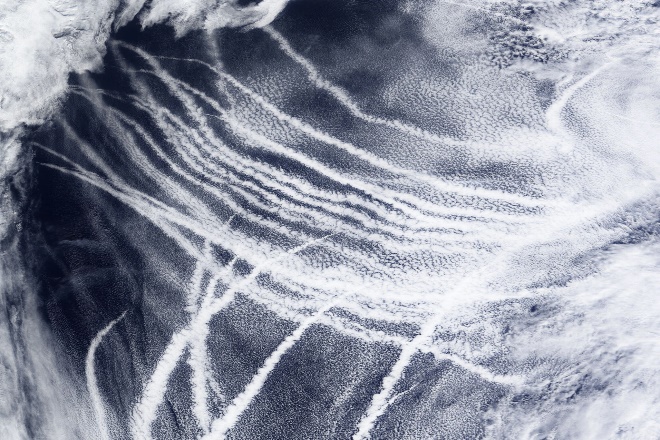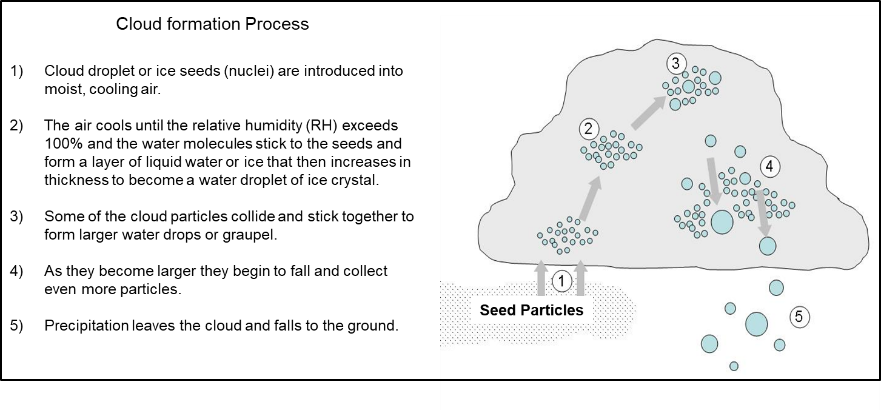Darrel Baumgardner, Chief Scientist at Droplet Measurement Technologies LLC asks if cloud seeding can partially mitigate the environmental impact of climate change, in this the first part of a series of special articles, starting with some basic principles
Climate change, a product of human activities, is linked to extreme weather events that, in turn, have negative impacts on precipitation. In some regions, the lack of clouds and moisture lead to drought while in others, the excess precipitation produces devastating floods. Cloud seeding has been a tool used for more than six decades to try and increase or decrease precipitation and more recently is being explored as the means to offset greenhouse warming and protect endangered coral reefs.
To explain the potential for cloud seeding to mitigate climate change, this four-part opinion piece will 1) introduce the reader to fundamental, science-based concepts of how clouds form and evolve, 2) provide examples of how seeding can be either beneficial or detrimental to the environment, 3) discuss how atmospheric scientists gain a better understanding of cloud responses to seeding and 4) describe innovative new approaches to cloud modification by seeding.
Inadvertent versus intentional cloud seeding
Clouds are often formed or modified inadvertently from seeds generated by human activities, as demonstrated in this satellite photo of “ship tracks” in stratus clouds over the ocean. In this case, “cloud brightening” is an increase in the reflection of solar radiation brought about by an increased number concentration of small droplets formed on seeds produced by emissions from ship engines.
Intentional seeding occurs when clouds are seeded from natural emissions like sulfate or salt particle over the ocean or from tailored material injected into clouds from ground-based or airborne generators.
The remainder of this opinion piece and follow-up articles are devoted to human efforts to change cloud characteristics with the introduction of material that would not have naturally been available at the time or place of cloud formation.
Cloud science
The physics behind the formation and growth of individual cloud particles is well understood. Theoretical formulations of the formation of water droplets or ice crystals on small aerosol particles, referred to here as seeds or cloud particle “nuclei”, have been verified with extensive laboratory and cloud chamber experiments. The necessary ingredients are these nuclei, a humid atmosphere and a mechanism for cooling the air until the humidity exceeds 100%. The annotated diagram shows a simplified cloud formation process.
Why fool with nature?
Humans have sought to produce clouds or alter their properties for several centuries. During periods when clouds were scarce or produced no rain, various efforts, some scientific and others less-so, have been made to relieve the impacts of drought as crops were failing. Hence the idea to “seed” the clouds with various types of material that would enhance the material already available. Similar efforts have been made to increase the amount of snow in mountainous areas where the snowpack is an important storage mechanism for water that is subsequently used for irrigation.
In more recent times, beginning in the 20th century, seeding activities were undertaken to try and mitigate the deleterious impact of hail that can have devastating effects on vineyards, fruit groves or tea plantations, not to mention the extensive damage caused to human property.
Even more recently, as multiple reports from the Intergovernmental Panels on Climate Change (IPCC) have highlighted, clouds have the mitigating effect of offsetting the impact of greenhouse warming by reflecting back to space some fraction of the sunlight that would otherwise be heating the earth. As a result, efforts are currently underway to evaluate the possibility of strategically increasing cloud cover by seeding of marine clouds.
Seeding challenges
The theoretical underpinnings of cloud formation and growth are well proven and undisputed. The complexity of how clouds form and evolve in the natural environment remains the focus of much research because of the multitude of environmental factors that come into play. Modifying the behaviour of clouds requires being at the right place, at the right time, with the right material in the right concentration. In the absence of any one of the four “rights”, the probability of bringing about a positive outcome decreases dramatically or worse, may bring about a negative, unintended result.
Seeding methodologies
In the second part of this series on cloud seeding, we will examine the traditional approaches to cloud seeding, how their success is measured and discuss more recent, innovative strategies such as those that are currently in progress with the support of the United Arab Emirates Rain Enhancement Program.
Please note: This is a commercial profile












